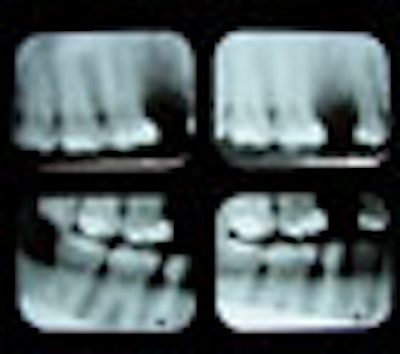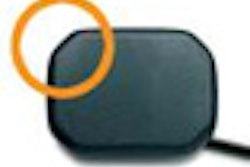
Filing insurance claims has long been the bane of the dental profession. Call it one of those necessary evils -- tedious, time-consuming, annoying -- but necessary.
While the task has been eased with the introduction of electronic claims and digital images, many dental offices have yet to embrace the new technologies -- despite the many articles and studies demonstrating the advantages of electronic records and digital images (for example, Journal of the American Dental Association [JADA], March 2008, Vol. 139:suppl_3, pp. 14S-19S, and JADA, April 2008, Vol. 139:4, pp. 477-481).
For those dental practices that are still paper- and film-based, the issue is exacerbated by a lack of standardization among third-party payers with regard to when images are required to support a claim and whether the accompanying films will be returned.
"For someone who is digital, there are no issues because you always have the original," said Marty Jablow, D.M.D. "But for someone with a film-based x-ray, they'll often send the original and hope they get it back." The only alternative has been to create duplicate films, which further increases the time and cost.
This scenario is changing, however. A growing number of nondigital dental practices are opting to scan and print their films, sending those to the insurers instead.
A recent study by the ADA Council on Dental Practice and Council on Dental Benefit Programs found that scanned, printed images of periapical, panoramic, and full-mouth films "may produce acceptable images for claims adjudication 90% of the time." The councils evaluated four different scanners (priced between $99 and $299) with the ability to scan 35-mm slides, negatives, or transparencies; 48-bit color and 16-bit grayscale bit depth; and a minimum 3200 x 9600 dpi scanning resolution.
"Using the appropriate scanner, image quality should not be an issue for a claims reviewer for any type of x-ray," Dr. Jablow said. "The issue is that once you scan it, how are you going to send it? If it's electronic, 72 dpi is fine. But if you are going to print it out, the image has to be at least 300 dpi."
Image size is also a consideration, he added. A 2 x 2-inch image will not reproduce as well as one that is 8½ x 11, for example.
For some in the dental community, however, the issue isn't what kind of images they should submit with their claims, but how often it is necessary.
"A bigger question is whether the insurance companies need to routinely receive images at all for dentistry, any more than they seem to for medicine," said Allan Farman, B.D.S., Ph.D., M.B.A., D.Sc., a professor of radiology and imaging science at the University of Louisville School of Dentistry. "What percentage of images is read, and what are the credentials of the persons employed by the insurance companies that enable to make a professional judgment on treatment requested or performed by a dentist?"
Some of these questions are starting to become moot, however. According to Dr. Jablow, a growing number of third-party payers are shifting away from requiring radiographic evidence -- electronic or otherwise -- of treatment. The motivation is to increase claims processing efficiency and reduce manual processes.
"There is a shift away from requiring radiographs, but there are still cases where Delta Dental will routinely require radiographs for certain services," Pam Martin, senior vice president and chief operating officer at Delta Dental of Missouri, and Kathy Fay, vice president for Hawaii Dental Service, stated in an e-mail to DrBicuspid.com. "In some cases, we are moving away from routinely requiring radiographs to a sampling strategy, provider focus review, and/or retrospective review."
In those instances in which Delta still does require radiographic evidence, however, "We prefer digital images because of the efficiency of submission and processing," Martin and Fay wrote. Printouts of scanned radiographs are less preferable in terms of clarity and efficiency, and film images require manual handling, they added.
"Another consideration for film submission is that many insurance companies will no longer return films to the dental office, so duplicates must be made for claims submission," they noted.
All of which, in the long run, can lead to unanticipated costs, Dr. Jablow pointed out.
"Some dentists say, 'It's going to cost me money to do electronics claims,' " he said. "But it costs money to do it the other way, too. Paper and film aren't free. You need to look at what it is really costing you."



















